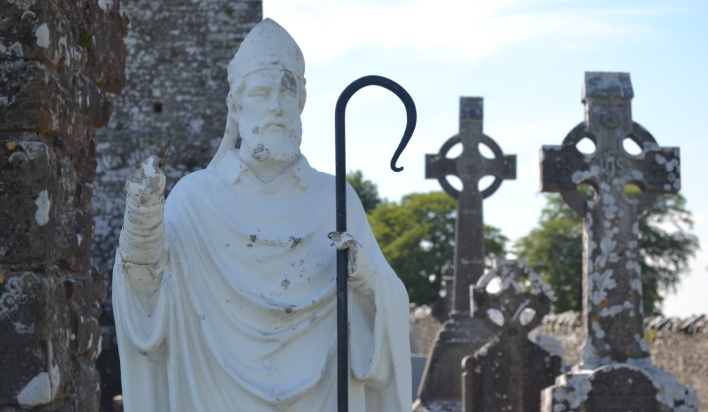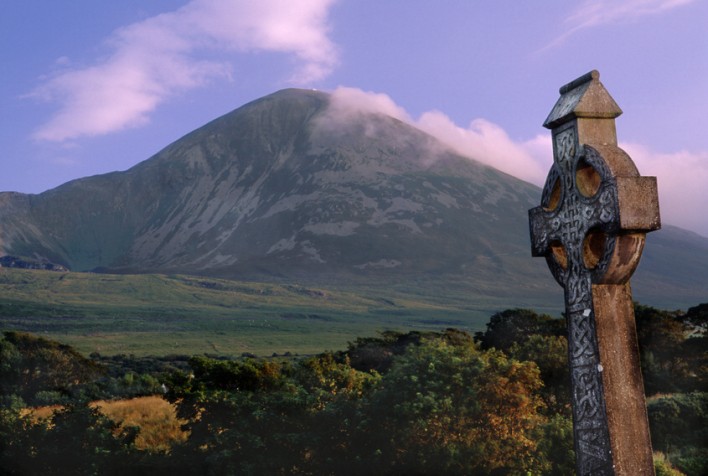Blog Categories
Blog CategoriesThe Story of Saint Patrick - Patron Saint of Ireland
Ireland’s Patron Saint – St. Patrick is famous the world over. We look at the story of perhaps the world’s most famous saint.
 |
| Saint Patrick statue on the Hill of Slane |
St. Patrick was a 5th century Romano-British Christian missionary and bishop in Ireland. He was born in Roman Britain and Calpurnius his father was a deacon and his grandfather Potitus a priest. Known as the ‘Apostle of Ireland’ he is Ireland’s primary patron saint.
As the story goes, he was captured from his villa in the country at age sixteen and taken to Ireland where he was sold as a slave to a farmer who lived in County Antrim.
Patrick endured significant hardship and worked looking after sheep on a hillside. He, however, turned his life to prayer, praying every night and one night heard the voice of God in a vision telling him to escape. He believed that it was a dream but God told him that it wasn’t.
He escaped and began to preach in Ireland after Pope Celestine fulfilled St. Patrick’s wish and ordained him as bishop to preach the word of God to the Celtic people. He changed the course of Irish history in the early 5th century when he began his mission of converting Ireland to the Christian tradition.
St. Patrick also has a very special importance too as he is the author of the first document known to have been written in Ireland, thus marking the tradition in Ireland from an oral to a written tradition.
He and his followers spread the word of God around the country. They fasted and prayed at the top of what is now known as Croagh Patrick. St. Patrick made a promise to God that the people of Ireland would keep their faith until the end of time and the day they did not keep their faith would be the day of doom.
 |
| Croagh Patrick in County Mayo |
He was said to have used the symbol of the shamrock plant to explain the concept of the Blessed Trinity – God the Father, God the Son and God the Holy Spirit. Legend has it that he was also responsible for banishing the snakes from Ireland.
St. Patrick spent 60 years in Ireland, consecrating over 300 Bishops to follow his ways. The Saint Patrick Visitor Center in Downpatrick now hosts a permanent interpretative exhibition devoted to St. Patrick.
The day of his death, March 17th, is now known as St. Patrick’s Day around the world and celebrated by anybody with Irish connections.
